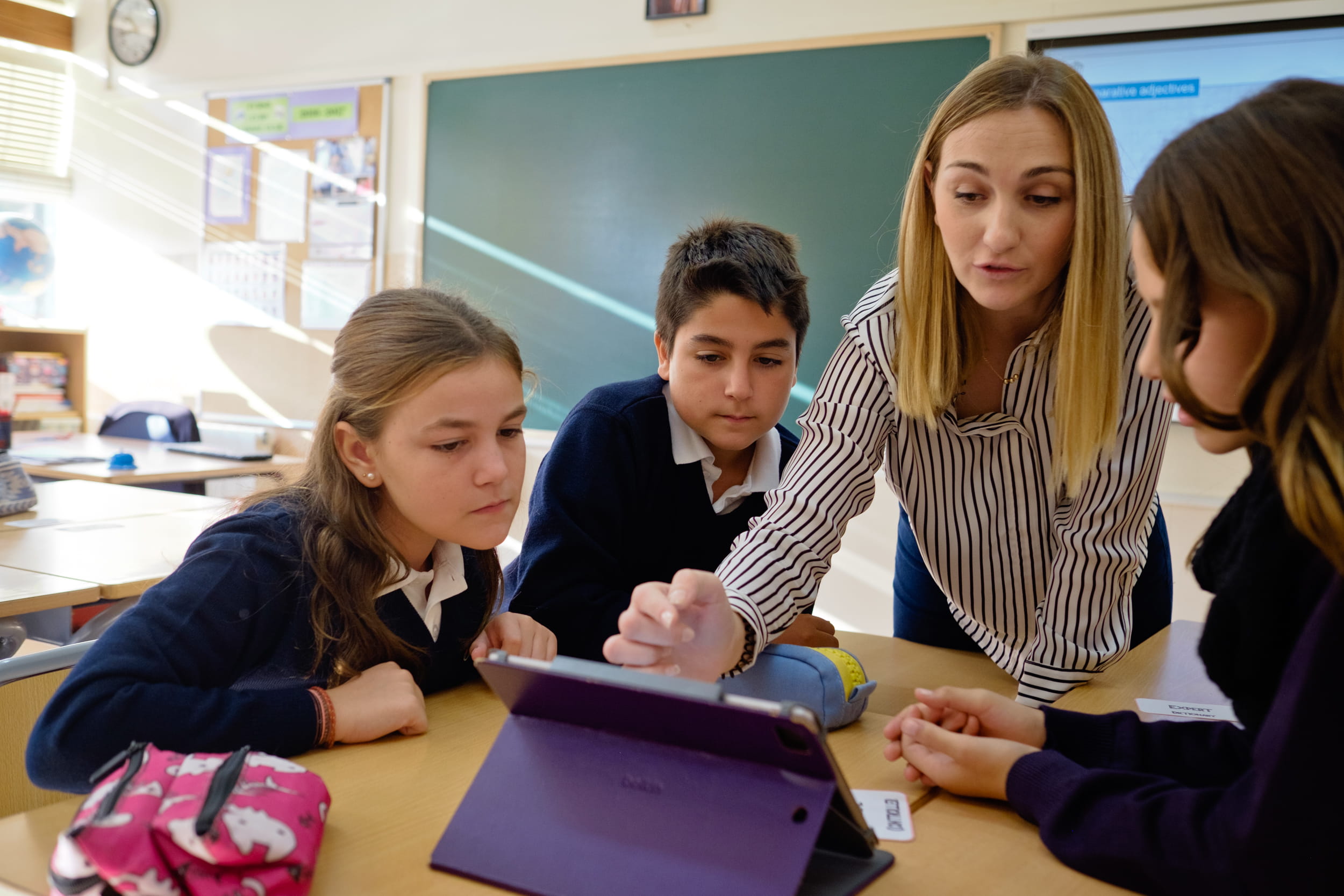Active learning classrooms can look a bit chaotic at times. Instead of waiting for the teacher to provide "the right answer," students work together to connect what they are learning to their life experiences outside the classroom by talking in pairs, triads, or small groups. The conversations range from problem-solving to respectful debates. But the constant buzz may differ from the energy levels educators are used to when working with traditional teaching strategies.
The classroom will be louder, with more talking by the students and less from the teacher. As a result, the learning is deeper,
says Kacie Germadnik, community engagement manager at SMART Technologies. The teacher acts as a coach or facilitator, but the students drive the learning.
Active learning teaching strategies incorporate a wide variety of methods. One internet search for “active learning activities” can yield hundreds of options. Consider these examples:
- Think/pair/share
- Role-playing
- Peer teaching and demonstrations
- Debates
- Socratic dialogue
- Self-assessment
- Goal-setting
- Jigsaw
But Germadnik emphasizes that these are only truly active learning when students drive the learning, when there is true collaboration and discussion, and when teachers provide meaningful feedback.
I've seen plenty of active learning strategies used that still involve the teacher leading the learning,
she says. For students to benefit from active learning, they must have a choice and voice in the process.
Three active learning strategies for your classroom
The key is beginning with one small step. Germadnik shares three methods she used as a K-5 teacher to help you get started.
1: Get students collaborating with think/pair/share
Think/pair/share can be an easy entry into active learning in the classroom, Germadnik says. The activity requires students to think internally about a question or topic and then pair up with another student to listen to their perspective. Students then share back what they learned from their partner.
Germadnik used a popular children’s story as the basis for a think/pair/share activity. She would ask students if it was "right or wrong" for Goldilocks to enter the bears’ house, sit in their chairs, and eat their food.
First, the students journaled their thoughts. Next, they were paired with a classmate to share their thoughts and the reasoning behind them. Then, each partner had to reiterate the other student's viewpoint. The exercise helped students realize they do not have to agree but must listen and be able to restate what has been shared without judgment.
This is a great way to help kids understand the value of multiple perspectives,
she says.
2. Learn from others with a jigsaw
The jigsaw is one of Germadnik's favorite active learning teaching strategies because it encourages students to learn from each other. While educators can use it in many ways, she regularly used the jigsaw to teach about English playwright William Shakespeare.
Students worked in groups, with each choosing a play of interest. Before their research began, she explained the grading rubric with details on objectives to achieve during their research. Each group then taught their classmates about the selected play.
It caught their attention and interest. It also deepened their knowledge by teaching their peers,
she says. Plus, there may have only been time to learn about one play in a traditional learning model. With the jigsaw, students were exposed to a greater breadth of Shakespeare's work.
Educators can modify the jigsaw in multiple ways. This gives the teacher freedom to experiment and use an active learning strategy in multiple ways,
she says.
3. Think deeper with Socratic dialogue
An internet search reveals countless options for running a Socratic dialogue. Each is based on the Ancient Greek philosopher Socrates' practice of following up a question with another question, even when you agree with the point being made. The objective is to learn to think differently and more deeply on a topic.
Germadnik encouraged Socratic dialogue with a fishbowl approach consisting of an inner and an outer circle. She tasked students with finding a quote, article, or song and then asked them to formulate questions about the selected piece.
Students in the inner circle shared what they thought on a topic and then followed it up with a question about the idea presented. A response from a classmate prompted more questions, broadening students’ understanding of the topic.
In the outside circle, students listened, reflected, and took notes on what transpired. Then the groups switched roles.
The goal was about sharing ideas and helping students probe other peoples’ ideas, get a better understanding of where another person is coming from, and think about things differently,
she says.
Education technology inspires active learning strategies
Finding ideas for bringing each of these active learning strategies into the classroom in a manageable way can feel overwhelming. However, in today’s world, leveraging educational technology to find inspiration for your classroom is easier than ever.
At the same time, EdTech opens the world and allows students to interact with their peers in different schools, states, and even countries. These tools also provide opportunities to interact with experts in the field and help educators create a safe space for all students to find their voices, no matter how hesitant or eager they are to participate in class.
It can be intimidating to speak up, but when you can share virtually, it gives students time to think, organize their thoughts, and share when ready,
Germadnik says. And technology is what the kids know. Students are digital natives, so it’s a tool that offers them the freedom of choice to reach the end goal you set for them.
Ready to learn more about how to incorporate active learning strategies into your classroom? Visit our blog or check out Lumio’s library of activities and resources focused on active learning.



